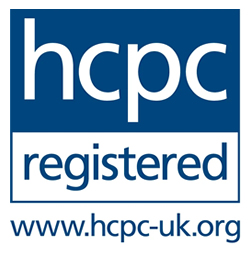
Nail Conditions
Ingrowing toenails
An ingrowing toenail is where a piece of nail pierces the flesh of the toe. It can feel as if you have a splinter and be extremely painful and inflamed or infected. In more severe cases, it can cause pus and bleeding. Ingrowing toenails most commonly affect the big toenail but can affect the other toes too. A nail that is curling (involuted or convoluted) into the flesh, but isn’t actually piercing the skin, isn’t an ingrowing toenail but can feel very painful and can also appear red and inflamed.
What causes it?
One of the most common causes is not cutting your toenails properly, cutting them too short or leaving them too long. Picking toenails will result in very short nails which can become painful and ingrown. Tight shoes, socks and other hosiery can press on the toes and cause it. Sport such as running, hiking, tennis, football, and rugby can result in trauma where the nail pierces the surrounding flesh and becomes inflamed. There are many genetic factors that can make you prone to ingrowing toenails including the shape of your feet, the way you stand or walk.
Will it go by itself?
It may resolve without treatment but often this is not the case, and it is better to get help sooner than later. Waiting too long may result in an infection and the need for antibiotics. Before you are seen by a podiatrist, you can relieve the discomfort by bathing your foot in a salty footbath which helps to prevent infection and reduces inflammation. Then apply a clean plaster.
NB: If you have diabetes, are taking steroids or are on anti-coagulants, don’t attempt to cut your nails or remove an ingrowing spike of nail yourself.
What are the treatments?
How a podiatrist will treat you will depend largely on the severity of your condition:
Podiatrists are experts in dealing with ingrowing toenails and will carefully remove an offending spike of nail, apply a dressing and give prevention advice. This can usually be done with minimal discomfort and without anaesthetic.
For toes too painful to touch, a local anaesthetic will be injected before removing the offending portion of nail.
For involuted nails, part of the nail that is curling into the flesh is removed and then the edges of the nail are filed to a smooth surface
If an infection is suspected, antibiotics may be necessary and the podiatrist will arrange a prescription with your GP.
For those particularly prone to ingrowing toenails, nail surgery may be necessary.
Nail Surgery
If you have a persistent ingrowing toenail more permanent solution may be necessary and nail surgery may be recommended. It is sometime necessary to remove whole nail called total nail avulsion (TNA) or just a section of the nail called a partial nail avulsion (PNA).
What is the procedure?
This procedure is done under a local anaesthetic. An injection is given into either side of the toe with the infected toe nail to numb it so that the process is pain free. Part of the nail is removed (PNA), leaving a permanently narrower nail. In some cases, a total nail avulsion (TNA) may be performed, where the entire nail plate and root are removed. In either case, the chemical phenol is used to cauterise the nail and prevent it regrowing. This is over 95% successful. You will have to go back to your podiatrist for a number of re-dressings so they can check healing progress.
When should I see a podiatrist?
You should see a podiatrist urgently if you have symptoms of infection, have diabetes, poor circulation or a reduced immune system. You should also visit a podiatrist if you experience any persistent pain in your toe from the ingrowing nail or have a condition that affects the nerves and/or feeling in your foot.
Nail infections
Fungal nails/ thick nails/ difficult nails/any nail condition that worries you. Podiatrists are experts in treating all types of nail conditions and can diagnose, advise, treat and manage problem nails.
Fungal Nails
Fungal nails can become thick and unsightly and can be treated with topical or oral medications. Oral medication can have side-effects so if you have other medical conditions or are on other medication, your GP or podiatrist can recommend the best treatment for you.
At Feet First we offer a variety of fungal nail treatments including: – topical solutions and also an innovative treatment known as Clearanail which is for more stubborn infections. This involves using a special piece of equipment to drill tiny holes in the nails so that a solution can pass through and get to the base of the nail to treat the infection.
Click here to see more about Clearanail.
To talk to a podiatrist about the options available regarding treatment, always ensure that any practitioners you visit are registered with the Health and Care Professions Council (HCPC) and describe themselves as a podiatrist (or chiropodist).


